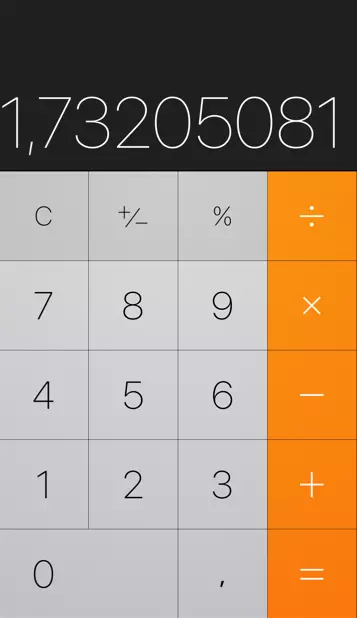Newton’s Method
Newton's method (or Newton-Raphson method) is an iterative procedure used to find the roots of a function.
Suppose we need to solve the equation \(f\left( x \right) = 0\) and \(x=c\) is the actual root of \(f\left( x \right).\) We assume that the function \(f\left( x \right)\) is differentiable in an open interval that contains \(c.\)
To find an approximate value for \(c:\)
- Start with an initial approximation \({x_0}\) close to \(c.\)
- Determine the next approximation by the formula
\[{x_1} = {x_0} - \frac{{f\left( {{x_0}} \right)}}{{f^\prime\left( {{x_0}} \right)}}.\]
- Continue the iterative process using the formula
\[{x_{n + 1}} = {x_n} - \frac{{f\left( {{x_n}} \right)}}{{f^\prime\left( {{x_n}} \right)}}\]until the root is found to the desired accuracy.
Let's apply Newton's method to approximate \(\sqrt 3.\) Suppose that we need to solve the equation
where the root \(c \gt 0.\)
Take the derivative of the function:
Let \({x_0} = 2.\) Calculate the next approximation \({x_1}:\)
In the next step, we get
Similarly, we find the approximate value \({x_3}:\)
In this iteration, the approximation accuracy is \(8\) decimal places like in a smartphone calculator.

So, we were able to compute the square root of \(3\) with the accuracy to \(8\) decimal places just for \(3\) steps!
Solved Problems
Example 1.
Approximate \(\sqrt[3]{2}\) to 6 decimal places.
Solution.
We apply Newton's method to the function \(f\left( x \right) = {x^3} - 2\) assuming \(x \ge 0\) and perform several successive iterations using the formula
Let \({x_0} = 1.\) This yields the following results:
Similarly, we get
We see that the \(4\)th iteration gives the approximation to \(6\) decimal places, so the answer is \({x_4} = 1.259921\)
Example 2.
Determine how many iterations does it take to compute \(\sqrt 5\) to 8 decimal places using Newton's method with the initial value \({x_0} = 2?\)
Solution.
We apply Newton's method to the function
The iterations are given by the formula
The first approximation is equal to
Continue the process to get the following approximations:
Hence, it takes \(3\) iterations to get the approximate value of \(\sqrt 5\) to \(8\) decimal places (not too bad!)
Example 3.
Approximate the solution of the equation \[{x^2} + x - 3 = 0\] to 7 decimal places with the initial guess \({x_0} = 2.\)
Solution.
We apply the recurrent formula given by Newton's method:
In the first step we get
The next approximations are given by
Thus, we were able to get the approximate solution with an accuracy of \(7\) decimal places after \(4\) iterations. It is equal to
Example 4.
Approximate \(\ln 2\) to 5 decimal places.
Solution.
To find an approximate value of \(\ln 2,\) we use the recurrent formula
Starting from \({x_0} = 1,\) we obtain the following successive approximate values for \(\ln 2:\)
The next calculations produce
One can see that we've got the approximation to \(5\) decimal places on the \(3\)rd step. So the answer is